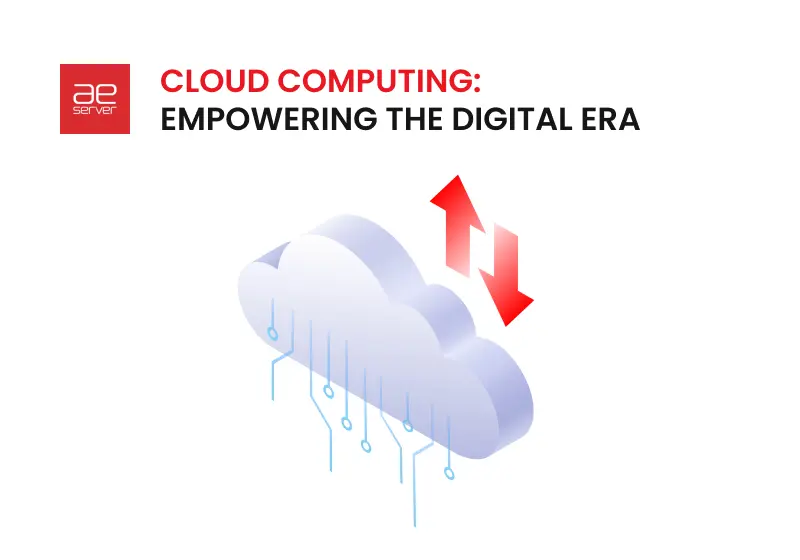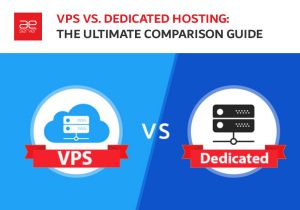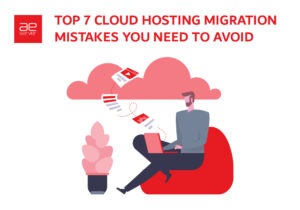Cloud computing has become a transformative force in the digital age. They have revolutionized how companies and individuals store, process and access data. Cloud computing has become the basis of modern technological infrastructure. They drive innovation and accelerate digital transformation. They also create new opportunities in various industries.
In the past, organizations had to invest significant resources in building and maintaining their physical IT infrastructure. Cloud computing services have changed this paradigm. They offered a virtualized environment. It has servers, storage, and networking provided over the Internet on a pay-as-you-go basis. This change not only reduces capital costs. It also enables businesses to adapt to changing requirements quickly. This helps you scale your business and launch new services with minimal hassle.
One of the critical cloud computing advantages is its role in democratizing access to advanced technologies. Small startups and large enterprises can now harness the power of advanced tools. Also, the cloud has become a driving force behind the global shift to remote work and digital collaboration.
In summary, cloud platforms are a decisive factor in the digital era. They provide flexibility, innovation, and efficiency. This is necessary to thrive in today’s fast-paced technological environment.

Let’s take a closer look at Cloud Computing Types.
Let’s take a closer look at these benefits.

Table of Contents
- 1 Meaning of Cloud Computing
- 2 Cloud Computing Types of Services
- 2.1 Infrastructure as a Service (IaaS)
- 2.2 Platform as a Service (PaaS)
- 2.3 Software as a Service (SaaS)
- 2.4 Function as a Service (FaaS)
- 2.5 Container as a Service (CaaS)
- 2.6 Database as a Service (DBaaS)
- 2.7 Network as a Service (NaaS)
- 2.8 Storage as a Service (STaaS)
- 2.9 Security as a Service (SecaaS)
- 2.10 Backup as a Service (BaaS)
- 3 Advantages of Cloud Computing
- 4 Disadvantages of Cloud Computing
- 5 Bottom Line
- 6 FAQ
Meaning of Cloud Computing
Cloud management is the provision of computing services. These include servers, storage, databases, networks, software, analytics, and more. Individuals and organizations may access and use these resources on a pay-per-use basis. It’s like paying a utility bill every month. The term “cloud” in cloud technology is a metaphor for the Internet. Just as the clouds in the sky are an abstract representation of complex processes. Cloud computing provides a simplified way for users to access and manage resources. Several vital characteristics define the cloud computing paradigm.- Self-service on demand. Users can provision and manage computing resources. This can happen without human intervention from the service provider.
- Broad access to the network. Cloud services are accessible via the Internet from various devices. Among them are laptops, smartphones, and tablets.
- Pooling of resources. Cloud providers pool computing resources to serve multiple users. This optimizes efficiency and resource utilization.
- Fast elasticity. Resources can be scaled up or down quickly based on demand. This provides flexibility and cost savings.
- Metered services. Cloud resources are tracked and billed based on usage. This enables a pay-per-use model. This eliminates the need for initial capital investment.
- Infrastructure as a Service (IaaS). Provides virtualized computing resources. Users can manage and control applications running in the infrastructure.
- Platform (PaaS). Offers a platform and environment for developers. This helps to avoid the details of the underlying infrastructure. PaaS includes tools for developing applications, databases, and other services.
- Software (SaaS). Provides software over the Internet on a subscription basis. Users can access and use the software through a web browser. Cloud technology profoundly impacts how businesses operate and how people use technology. It provides greater flexibility, cost savings, and innovation. This provides a flexible infrastructure that adapts to the changing needs of the digital age.

Cloud Computing Types of Services
There are many types of cloud computing services. Here’s a table outlining different types of cloud computing services.| Service Type | Description |
| Infrastructure as a Service (IaaS) | Provides virtualized computing resources like virtual machines, storage, and networking. Users have control over the operating systems and applications. |
| Platform as a Service (PaaS) | Offers a platform and environment for developers to build, deploy, and manage applications without managing the underlying infrastructure. |
| Software as a Service (SaaS) | Delivers software over the Internet on a subscription basis. Eliminates the need for local installation and maintenance. |
| Function as a Service (FaaS) | Developers can run code responding to events without managing servers. Billed based on execution time. |
| Container as a Service (CaaS) | Provides a container runtime environment for deploying and managing applications. This is done using a containerization technology like Docker. |
| Database as a Service (DBaaS) | Offers managed database services. It allows you to manage databases without the administrative aspects of management. |
| Network as a Service (NaaS) | Offers networking capabilities and services. These include virtual private networks (VPNs), firewalls, and cloud load balancers. |
| Storage as a Service (STaaS) | Provides scalable and manageable storage solutions. This includes object storage, file storage, and block storage accessible over the Internet. |
| Security as a Service (SecaaS) | Offers threat detection, encryption, and access control to protect applications in the cloud. |
| Backup as a Service (BaaS) | Provides automated solutions for backup and recovery of data, applications and systems. This guarantees the availability and protection of data. |
Infrastructure as a Service (IaaS)
Infrastructure as a Service (IaaS) provides virtualized computing resources. These include virtual machines, storage, and networking. Users control the operating systems and applications running on these resources. IaaS offers companies a flexible and scalable solution for managing their IT infrastructure. It becomes possible without the need for physical equipment.Platform as a Service (PaaS)
Platform-as-a-Service offers developers an environment to build, deploy, and manage applications. You can accomplish this without dealing with the underlying infrastructure’s complexities. PaaS provides tools, runtimes, and development infrastructures. This allows developers to focus on coding and application logic rather than system administration.Software as a Service (SaaS)
The software provides software over the Internet on a subscription basis. Users can access the software. They can use it through a web browser without installing or maintaining it locally. A service provider hosts and manages SaaS applications. This makes it easier for users to access and collaborate on software.Function as a Service (FaaS)
It is one of the cloud computing types. Function as a service is also known as serverless computing. It allows developers to write code in functions that events can trigger. Developers don’t need to manage servers. The cloud provider maintains the infrastructure. FaaS enables efficient scaling and billing.Container as a Service (CaaS)
CaaS provides a platform for deploying, managing, and orchestrating containers. They encapsulate applications and their dependencies. CaaS abstracts the underlying infrastructure and simplifies the deployment process. This makes it easier to manage containerized applications at scale.Database as a Service (DBaaS)
Database as a Service offers solutions for managed databases in the cloud. Users can provision, manage, and scale databases. This is possible without the need for in-depth database administration. DBaaS providers perform backups, updates, and scaling. This allows users to focus on data management and application development.Network as a Service (NaaS)
Network as a Service provides network capabilities and services through the cloud. This includes virtual private networks (VPNs), firewalls, and load balancers. NaaS allows companies to manage their network infrastructure. It also allows you to protect it without the need for physical equipment. This has the great meaning of cloud computing.Storage as a Service (STaaS)
Storage as a Service offers scalable and manageable cloud storage solutions. Users can store and retrieve data over the Internet. You can achieve this without needing to manage physical storage equipment. STaaS includes different types of storage. These include object storage, file storage, and block storage.Security as a Service (SecaaS)
Security as a Service provides security solutions and services through the cloud. This includes threat detection, encryption, access control, and identity management. SecaaS helps companies improve security. It also helps protect your apps and data from cyber threats.Backup as a Service (BaaS)
BaaS offers automated data backup and recovery solutions. BaaS providers manage the backup process. This ensures data availability and security. Users can restore data from backups in case of data loss or system failures. All these services can be useful for both individuals and companies.Advantages of Cloud Computing
Cloud computing has many advantages. Here are the main ones.| Advantage | Description |
| Scalability | Easily scale computing resources. This will help meet changing requirements without requiring a large initial investment. |
| Cost Savings | Reduce capital expenditure. Pay only for the resources you use with a pay-as-you-go model. |
| Flexibility | Access resources and apps from anywhere you have an internet connection. It enables remote work and collaboration. |
| Disaster Recovery | Cloud providers offer data redundancy and backup. This improves data recovery in the event of system crashes. |
| Automatic Updates | Service providers handle software updates. This ensures the relevance and security of programs and systems. |
| Rapid Deployment | Quickly deploy applications and services. Reduce time to market and drive faster innovation. |
| Resource Optimization | Optimize resource allocation based on demand, improving efficiency and reducing energy consumption. |
| Global Reach | Access global network of data centers. This improves productivity and user engagement for a geographically dispersed audience. |
| Elasticity | Automatically adjust resources based on workload fluctuations, optimizing performance and cost efficiency. |
| Collaboration and Accessibility | Enable seamless collaboration among teams and users through shared access to applications and data. |
Scalability
Scalability in cloud computing services allow you to customize your computing resources easily. You can quickly scale up during periods of high demand. You can also zoom out during quiet times. This ensures optimal productivity and cost-effectiveness.Cost Savings
Cloud technology provides savings. They eliminate the need for initial investment in equipment and infrastructure. You pay for the resources you use on a pay-per-use basis. So you avoid unnecessary costs and reduce capital costs.Flexibility
Cloud computing provides flexible access to resources from anywhere with an Internet connection. It enables remote work, collaboration, and adaptation to business needs.Disaster Recovery
Cloud services offer built-in data backup. They also provide backup options and disaster recovery solutions. Cloud backup ensures fast recovery of your data. This minimizes downtime and disruptions.Automatic Updates
Cloud services offer built-in data backup. They also provide backup options and disaster recovery solutions. Cloud backup ensures fast recovery of your data. This minimizes downtime and disruptions.Rapid Deployment
Cloud computing services enable the rapid deployment of applications and services. Developers can quickly provision resources, test applications, and deploy new features. This reduces time to market and facilitates faster innovation.Resource Optimization
Cloud platforms offer tools to optimize resource allocation based on demand. This leads to better utilization of computing resources. It also leads to increased efficiency and reduced energy consumption. And this, in turn, contributes to cost savings and environmental sustainability.Global Reach
Cloud providers operate data centers around the world. They offer a network of territorially distributed resources. This global reach increases performance, reduces latency, and improves engagement with your user base.Elasticity
Elasticity in cloud computing means the ability to adjust resources automatically. They do it based on fluctuations in the workload. This ensures that your applications can handle different levels of demand. At the same time, they will maintain productivity and efficiency.Collaboration and Accessibility
Cloud technology enables seamless collaboration between teams and users. They share applications, data, and resources. It promotes teamwork, increases productivity, and facilitates real-time communication. In general, there are many cloud computing advantages. But in addition to the benefits, it is also worth considering its disadvantages.
Disadvantages of Cloud Computing
In addition to the mentioned advantages, cloud platform also has cloud computing disadvantages. They are also worth paying attention to.- Security issues. Before choosing a company for data storage on servers, you should ensure its reliability. Organizations may not have to worry about data leaks, unauthorized access, or compliance issues.
- Downtime and reliability. Disruptions in cloud services can lead to rest. This will affect business operations. However, many cloud providers offer high availability.
- Dependence on the Internet connection. Cloud services require a reliable Internet connection. A slow or interrupted connection can prevent access to critical applications.
- Binding to the supplier. Migrating applications to another vendor or back to on-premises infrastructure can be difficult and expensive.
- Limited control. Users have limited control over the underlying infrastructure and hardware. This can cause configuration and performance issues.
- Performance variability. Shared resources in a multi-tenant environment can cause performance fluctuations. This is especially noticeable during peak usage.
- Regulatory and compliance issues. Certain regions have strict regulatory requirements for data storage and processing. They may conflict with cloud service practices.
- Loss of physical control. Moving to the cloud means entrusting sensitive data to a third-party provider. This could raise concerns about biological control and ownership.
Bottom Line
Cloud computing is revolutionizing the way companies and individuals access technology resources. It offers many advantages.- Scalability;
- cost savings;
- flexibility;
- emergency recovery;
- automatic updates;
- rapid deployment;
- optimization of resources;
- global coverage;
- elasticity;
- collaboration and accessibility.
FAQ
Can cloud computing be customized to suit specific business needs?
Yes, businesses can tailor cloud solutions to match their unique requirements.
How do cloud providers ensure data security?
Cloud providers implement encryption, access controls, and regular security updates to safeguard data.
What industries benefit the most from cloud computing?
This applies to many industries. IT, healthcare, finance and e-commerce all benefit greatly from cloud computing.
Is cloud computing suitable for personal use?
Yes, cloud services offer personal users storage, productivity tools, and other benefits.





